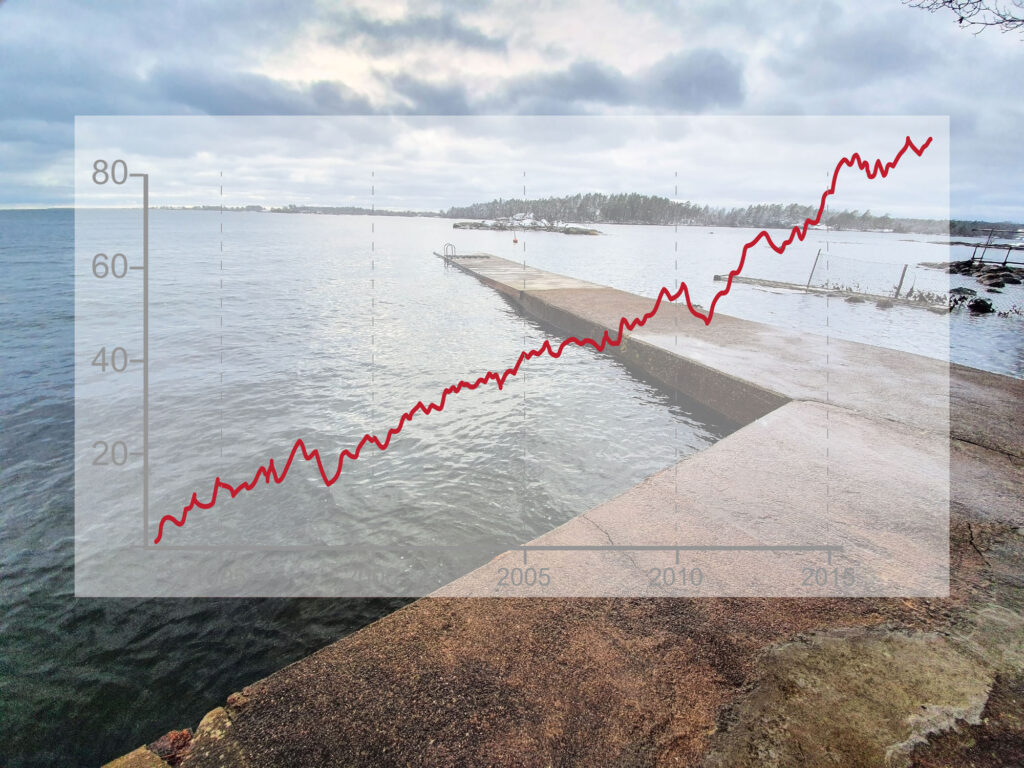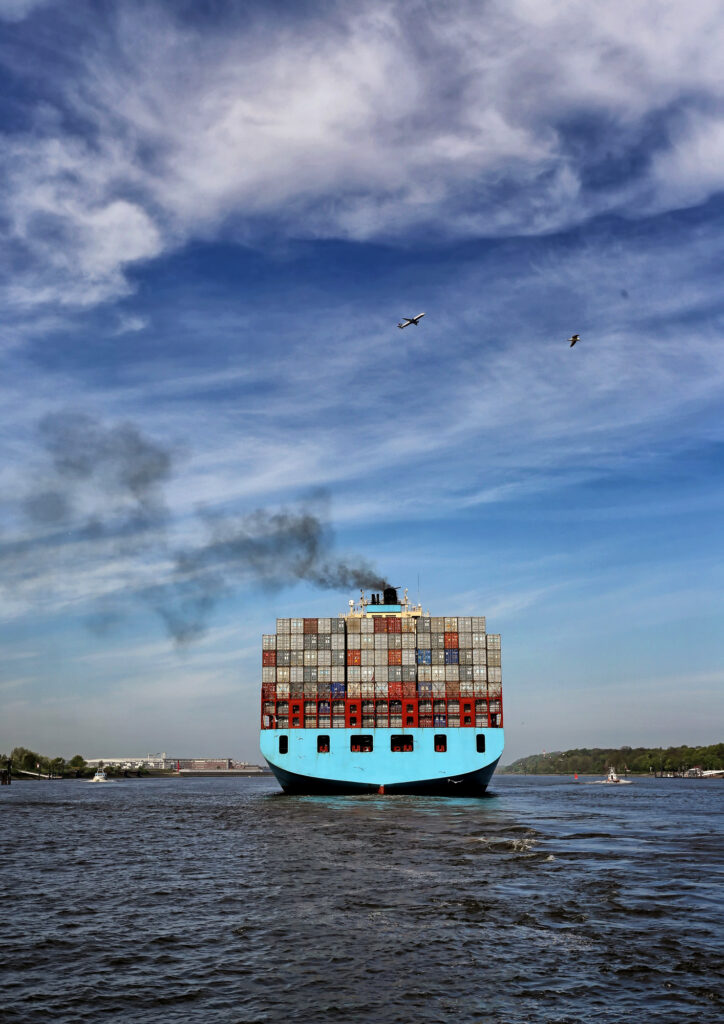Sea level rise (SLR) will spell the end for many Caribbean ports as we know them today.
By Rawle Baddaloo*
2021, August 1: Recent accounts of exceedingly high atmospheric temperatures on the North American west coast, with dozens of people dying, must now be cause for concern. Record-breaking heat in Canada early in summer 2021 validates the mission of global entities that are now actively pursuing an agenda of sustainability through protection of the environment.
The wake-up calls have been many and increasing. In a Middle East port, a container carrying dangerous goods exploded on the ship during discharge. The ambient temperature was 50°C and may have been the cause of the incident. Meanwhile, in Europe, recent unprecedented flooding, in Germany particularly, has caused many deaths. One might say that’s all far from the Caribbean and, as such, there is no need to worry. However Caribbean ports should get active in pursuing or actively supporting initiatives towards sustainability and environment protection.
 Earth’s climate is changing but it is headed in the wrong direction. Sea temperatures are rising. Land ambient air temperatures are also on the rise. Huge sections of Earth’s polar ice caps, up to seven times as large as Barbados have broken off and melted. The normally frozen Northern Passage, once impassable for much of the year with little consideration for use in commercial shipping, is now being regarded as just another sea route.
Earth’s climate is changing but it is headed in the wrong direction. Sea temperatures are rising. Land ambient air temperatures are also on the rise. Huge sections of Earth’s polar ice caps, up to seven times as large as Barbados have broken off and melted. The normally frozen Northern Passage, once impassable for much of the year with little consideration for use in commercial shipping, is now being regarded as just another sea route.
End for many ports
Action must be taken to slow and at best stop this slide. The majority of seaports in the Caribbean are on relatively small shelves at sea level. There are hinterland plains but there is not a lot of real estate before the land rises sharply into hills and, in some cases mountains.
Sea level rise (SLR) will spell the end for many Caribbean ports as we know them today. Let me hasten to add that this is an international phenomenon and action is needed to address the specific realities affecting seaports everywhere.
The IMO has been initiating conventions to stem and even stop the deterioration of Earth’s environment. The biggest and most important of these is The International Convention for the Prevention of Pollution from Ships, 1973 as modified by the Protocol of 1978 and its six Annexes (loosely called MARPOL 73/78 and its Annexes).
MARPOL was enforced by each participating country adopting the MARPOL Regulations and enforcing them as part of the Country’s Laws. Regrettably, this has not happened as only a low percentage of countries in the Caribbean have fully implemented MARPOL. (Of the 12 countries that ratified only three have implemented it.) This led to many more initiatives including the strengthening of the Annexes of MARPOL and introduction of other protocols and initiatives.
In 2015 the Paris Agreement was adopted. It came in force in November 2016. This agreement was a legally binding international treaty on climate change and was adopted by 196 signatories. The stated objective was to limit global warming to well below two degrees, preferably 1.50C compared to pre-industrial levels. To achieve this long-term temperature goal, countries aimed to reach global peaking of greenhouse emissions as soon as possible to achieve a climate neutral world by mid-century. The question that arises is: has the Paris Agreement worked?
It might be easy to answer no. However, while there were moves (like the USA’s) to withdraw, more and more countries, companies and associations are establishing carbon neutrality targets. Zero-carbon solutions were becoming competitive across economic sectors representing 25% of the emissions. This was most noticeable in the power and transport sub-sectors.
While, more than 90% of world trade is transported by sea (… island-states are comparatively more dependent on cargo transported by sea than other countries), it should be noted that shipping’s share of global emissions is now less than 3%. However, it is anticipated that it will rise seriously due to the very large container ships currently on order and being delivered. It should also be noted that the European Union was already looking at implementing surcharges for both sea and air traffic.
Not all developing countries have the capacity to deal with many of the challenges brought by climate change. As a result, the Paris Agreement placed great emphasis on climate-related capacity building for developing countries, requesting all developed countries to enhance support for capacity-building actions in developing countries.
Developments worldwide, some directly influenced by IMO, have resulted in the formation of many non- governmental, non-profit organizations whose main programme is to eradicate pollution and arrest climate change. I here refer to the North American Maritime Environmental Protection Association (NAMEPA) and the Caribbean Maritime Protection Association (CARIBMEPA). NAMEPA was formed in 2008. CARIBMEPA was launched in May 2019, but eventually got its registration sorted out in 2021 and is a chapter of NAMEPA. Besides being involved in projects of garbage removal, energy from waste, beach and ocean cleaning and educational programmes for schools, CARIBMEPA is actively working to establish a MARPOL Training Institute in the Caribbean region.
On January 1, 2020, the IMO implemented IMO 2020 to reduce Sulphur emissions. Sulphur content in bunker fuel was now to be reduced to 0.5%, down from 3.5%. The full impact of this regulation has not yet been analysed as COVID 19 had a serious impact on world shipping.
 Decarbonisation
Decarbonisation
The next IMO step was decarbonisation. This reduction of carbon dioxide emissions through use of low carbon power sources helps to lower the output of greenhouse gases into the atmosphere.
An IMO initiative implemented four years ago was the creation of the Maritime Technology Cooperation Centres (MTCCs). This was done in Africa, Asia, the Caribbean, Latin America and the Pacific. These Regional Centres constitute the GMN or The Global MTCC Network project, funded by the European Union.
The MTCCs focused on Annex VI of MARPOL. And they have implemented pilot projects requiring the collection and analysis of data. This has served the various regions in good stead as IMO has moved forward to implement the Initial IMO GHG Strategy towards decarbonisation. The data collected so far has created an excellent data base for the various regions to use for making informed decisions as they launch processes in response to related Resolutions.
MTCC Caribbean is hosted by the University of Trinidad and Tobago (UTT) Centre for Maritime and Ocean Studies (CMOS), Chaguaramas Campus. It has presented many successful capacity building workshops with topics on Green House Gas Emissions, Energy Efficiency Technologies and the Energy Efficiency Index Baseline for Maritime Shipping in the Caribbean. The data baseline for regional vessels has been established and will continue to expand as the IMO’s new Regulations become effective on January 1, 2023. The Energy Efficiency Index for existing vessels i.e., pre-2013 vessels and the Carbon Intensity Indicator (CII) for vessels > 400gt has been highlighted in one of MTCC Caribbean workshops.
Effective January 1, 2023, vessels must cut their emissions by 40% with increasing reductions by 2030.
New vessels will have an Energy Efficiency Design Index (EEDI) while existing tonnage will have an Energy Efficiency Existing Index (EEXI).
Future Ports, Decarbonisation and Green Logistics have been part of the discussions at the MTCC Caribbean workshops. The port manager who attended these workshops is geared for the new and changing world.
Imperatives
Port managers need to look at every emission in his jurisdiction. Some could be solved very quickly; others may be done over a longer period. In the context of reduction of harmful air emissions for the maritime sector, January 1, 2020 (with the Low Sulphur Regulations coming into effect) marked a significant step in the right direction. Every component of the logistics chain however must play its part.
Port administrations across the region must now look towards an evolution to green ports, in order to be considered a ‘preferred port’ of the future.
In Norway a number of green ports are now offering plug-in facilities for vessels thereby nullifying all ship emissions in port. This practice is now trending worldwide.
A quick option for ports is to look at internal port activity, for example, trucking. Container trucks spend long periods with engines idling, either awaiting or delivering cargo. Moves could be made to have trucks run engines only when absolutely necessary. This, together with the port retrofitting with electric vehicles, would make a significant improvement.
In a region where there are so many alternative energy options, we must, for survival, move away from burning fossil fuels. At this stage, any and all efforts to save Earth’s environment are imperatives.
In the port complex, the ball is in the court of the port manager.
The port manager must take the lead now. []

* Capt. Rawle Baddaloo, Past President of the Caribbean Shipping Association, is Co-leader of Caribbean Marine Environment Protection Association (CARIBMEPA).





